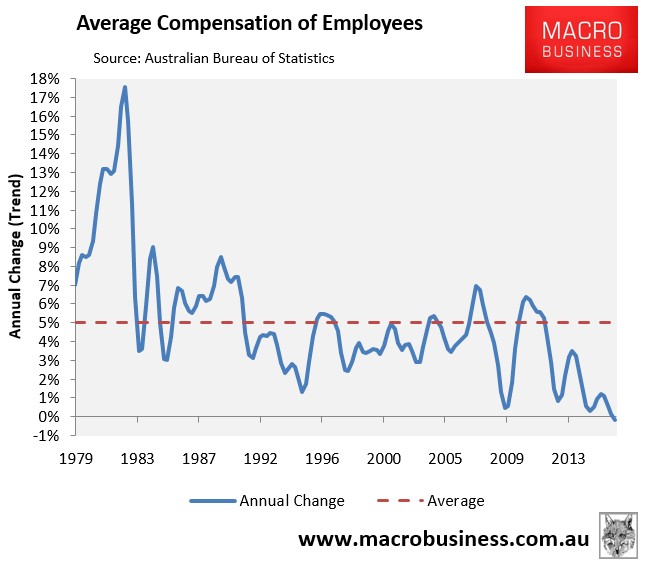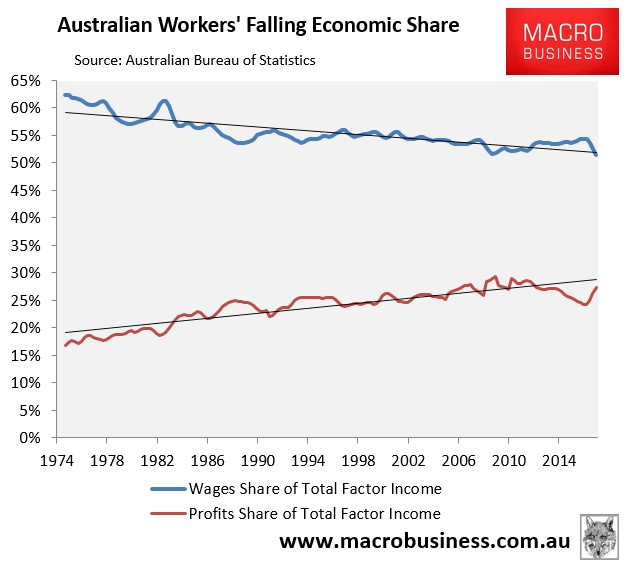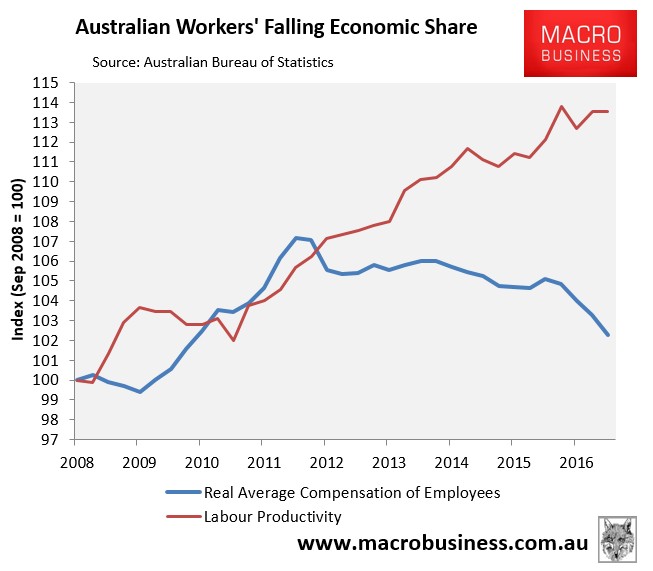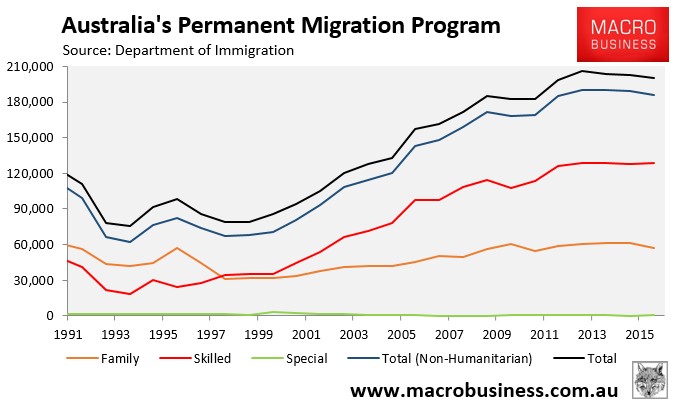Former federal treasurer, Wayne Swan, is concerned that Australia’s middle-class risks going the way of America’s and claims the Labor Party and the union movement need to better argue the case for improved wages for middle-class workers. From The AFR:
“If we cannot make the economic case that good wages and working conditions for low and middle-income earners will promote economic growth and match our argument with policy, we will suffer the same fate as the Democrats in America,” he will tell the annual ACTU Congress.
“We have to make the case that middle-income consumers, not just rich people, are job creators.”
He said the labour movement must move beyond social justice rhetoric because the public thinks the “only reason to help workers is because we fell sorry for them”.
Mr Swan will say the sheer scale of de-industrialisation and removal of worker rights in the US had created “an army of working poor” with adverse political consequences for the left.
“If we are looking for reasons for [Donald] Trump’s victory look no further than the despair of working people and the failure of our side of politics in the United States to capture their imagination and garner their support,” he will say…
He recommends several changes including a return to when the ACTU was represented on the RBA board and placing workers and shareholders on company boards…
“The grotesque enlargement of executive pay and packages over past decades has fuelled the rightful resentment of working people towards the business community.”
Wayne Swan is justified in being concerned about wages. The March quarter national accounts saw average compensation per employee contract in nominal terms for the first time in recorded history:

It also saw the share of Total Factor Income going to workers falling to the lowest level in more than 50 years:

Despite solid increases in labour productivity:

There are many reasons for slow wage growth. Jessica Irvine pointed to several the weekend:
Overall, the Australian economy became more capital intensive, because of this rapid expansion of the capital intensive mining sector – which represents about one-fifth of all capital invested in Australia.
If it takes more capital input, relative to labour input, to produce a certain amount of output, you would expect a higher return to capital relative to labour.
Until recent decades, economists had assumed that the share of income going to capital and labour would remain steady over time.
…Globalisation has exposed workers in developed nations to competition from cheaper, lower wages workers in developing nations. This has reduced their wage negotiation power.
Technology has also undermined worker power, by replacing humans in many cases with machines, computers and robots. If it takes fewer workers to produce a certain output, you would expect them to get a declining share of income.
The continued weakness in Australian labour’s share of national income in more recent years may indeed be due to the lower labour intensity of the new economy.
…So, what should we do about it?
In his 2013 paper, Parham cautioned against any moves to restore labour’s income share through a return to the old days of more centralised wage bargaining, warning of the inflationary risks.
More recent stagnant wages growth makes this less of a risk.
But Parham’s call for greater focus on productivity-enhancing reforms, remains apt: “Wage growth without productivity growth is not sustainable. With declining terms of trade, a focus on re-invigorating productivity growth would provide the conditions for sustainable growth in real wages.”
Conveniently, neither Swan nor Irvine mention mass immigration. But, one has to ask, what does deliberately pouring ever more workers – many of whom are happy to work for less – do to labour income in the scenario outlined by Irvine? Obviously it robs workers of even more pricing power and exacerbates structural headwinds. Improving productivity in this environment will only send ever more income to capital.
The Fake Left must address the elephant in the room: mass immigration. Australia’s permanent migrant intake has been maintained at turbo-charged levels – even higher than during the mining boom – despite the labour market and economy having significant spare capacity.

As long as the labour market continues to be flooded with 200,000 permanent migrants per year (mostly via the ‘skilled’ intake), as well as maintains an easily rorted temporary visa system, there will continue to be an oversupply of labour, which will continue to reduce workers’ bargaining power and maintain downward pressure on wages.
In the meantime, housing affordability and infrastructure efficacy will remain under pressure, especially in the migrant hotspots of Sydney and Melbourne, thus eroding workers’ real purchasing power even further.
The Fake Left would do well to study The New Class War, published this month in the American Affairs Journal, which chronicles the deleterious impact of mass immigration on the American working and middle-classes:
As we have seen, in the late twentieth century, Western managerial elites, by means of transnational corporations, were able to escape from their mid-twentieth-century social contract with national workers by offshoring production, or threatening to do so. Purely domestic companies, like hotels, restaurants, and construction companies, did not have this option. But they could benefit from immigration, because loose labor markets weaken the bargaining power of workers, just as tight labor markets weaken the bargaining power of employers. That is why, throughout most of history in the United States and other countries, organized labor has usually opposed large-scale immigration of any kind, while capitalists and corporate managers have often welcomed it…
Whatever the particular regime, in every Western country the immigration issue pits the managerial elite against the working-class, native majority.
Scholars debate the economic effects of immigration to the United States. A recent National Academies of Sciences, Engineering and Medicine report tried to put a positive spin on its findings, but they were sobering: lower wages “for immigrants or native-born workers who have not completed high school—who are often the closest substitutes for immigrant workers with low skills,” and the reminder that “first-generation immigrants are more costly to governments, mainly at the state and local levels, than are the native-born.” The benefits of low-wage immigration, according to the report, go chiefly to the affluent consumers of labor-intensive services, while the costs fall on low-wage workers and taxpayers…
The other factor is the modern welfare state. On both sides of the Atlantic, it was created in a period of low immigration and high native fertility after World War II. National welfare states take different forms, but they are all based on the principle of solidarity among members of the nation, who agree to work and be taxed to help their fellow citizens in order to be eligible for that same help in sickness or old age.
The incompatibility of the welfare state and mass immigration was noted by the libertarian economist Milton Friedman: “If you have a welfare state, if you have a state in which every resident is promised a certain minimum level of income, or a minimum level of subsistence, regardless of whether he works or not, produces it or not. Then [free immigration] really is an impossible thing.” His ideological opposite, Paul Krugman, agrees. Because “modern America is a welfare state” and “low-skill immigrants don’t pay enough taxes to cover the cost of the benefits they receive,” Krugman concluded that the “political threat that low-skill immigration poses to the welfare state is more serious” than its other consequences…
While using legal and illegal means to promote mass immigration, in order to discourage unions, suppress wages, avert inflation caused by tight labor markets, and to provide a buyer’s market in nannies and gardeners, the managerial elites of North America and Europe also champion “diversity,” which reduces the likelihood that workers of different ethnicities will unite in a common front against economic elites…
Tight labor markets for domestic service workers, achieved by immigration restriction, work-sharing, shorter workweeks, or other means, should be looked on favorably by policymakers, for several reasons. Higher market wages for service workers would mean a larger domestic market, a true mass market capable of supporting large-scale industries at home as a base for foreign expansion. At the same time, higher market wages in the domestic service sector would encourage automation and other kinds of labor-saving strategies, boosting service-sector productivity and perhaps increasing domestic demand for labor-saving machinery and software that can be produced in the nation or the bloc. If high wages lead to the replacement of fast-food workers by kiosks, the manufacture of the kiosks could become a new, capital-intensive, high-technology industry.
If the Labor Party genuinely cared about its working class base, it would stop ignoring the issue and announce policies to curb Australia’s mass immigration program and safeguard living standards by taking pressure of jobs, housing, infrastructure, and the environment.
Sadly, they are a fake workers party, just as The Greens is a fake environmental party.

